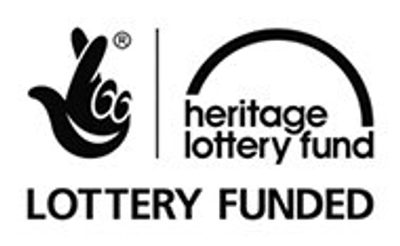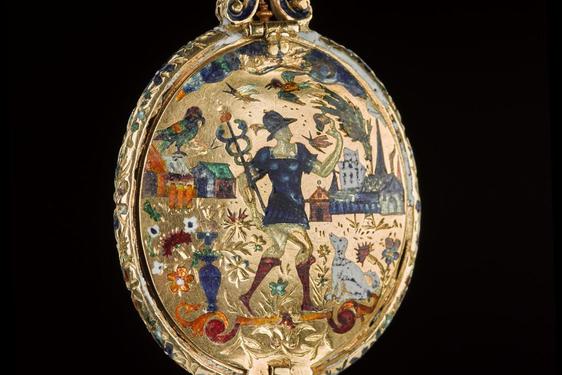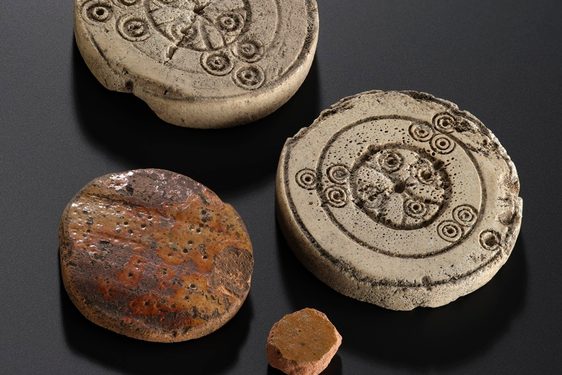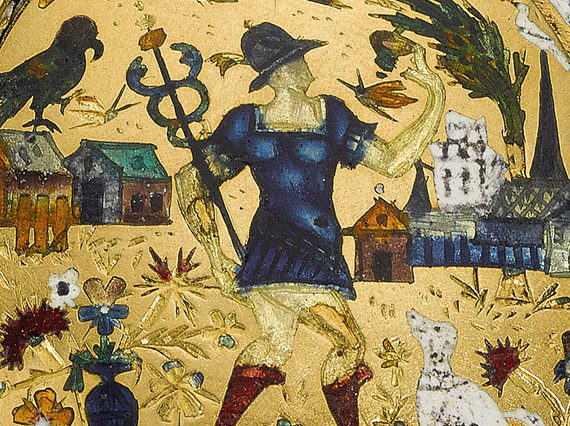
Five questions about the Fettercairn Jewel
News Story
The Fettercairn Jewel is one of a very small number of Renaissance jewels to have survived in the British Isles. Jewellery from such an early date has a very low survival rate, due to the historic recycling of precious stones and materials. Understanding this locket could shed new light on the Scottish Renaissance.
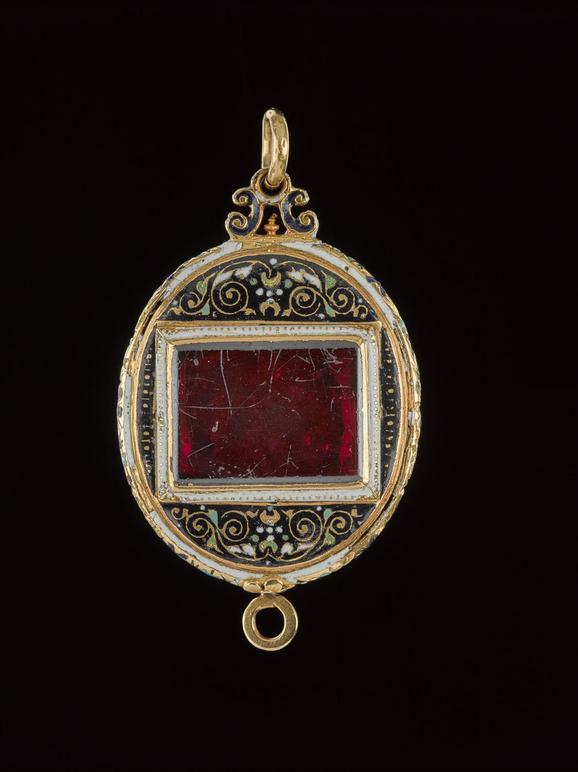
The front of the Fettercairn Jewel, set with a large garnet. Museum reference X.2017.45.
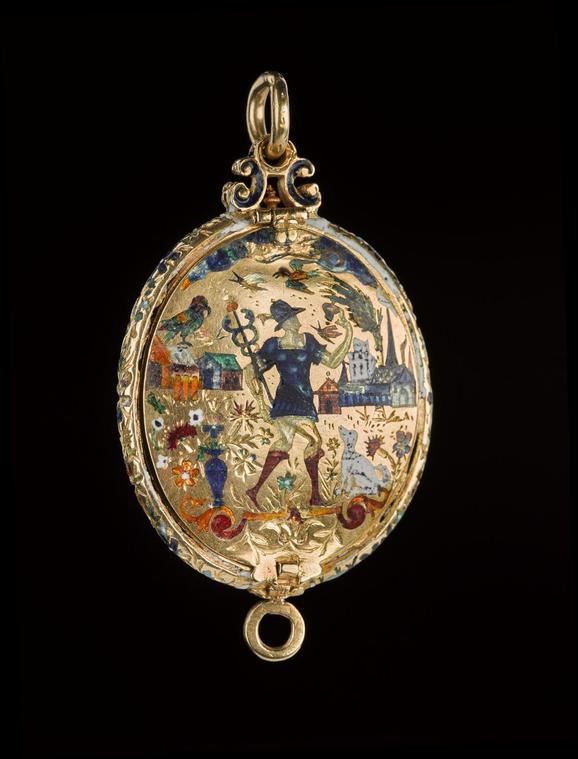
The reverse of the Fettercairn Jewel is decorated with detailed enameled imagery. Museum reference X.2017.45.
Why is the Fettercairn Jewel so important?
We currently think that Fettercairn Jewel was made in the later sixteenth century. Comparison of this Jewel with other jewellery from this period shows that it is a particularly finely engraved and enamelled example. It can be used to suggest ways in which a visually literate society communicated complex messages through objects. It allows us to learn more about the quality and ambitions of 16th-century craftsmanship.
What does the imagery on the Jewel mean?
The large dark red stone on the front of the jewel is a garnet, which was reputed to have medicinal and healing properties. On the reverse of the pendant the scene centres on a figure of Mercury, with his caduceus, or staff, resting on his outstretched right arm. He is wearing a winged helmet and classical armour, and holding something in his raised left hand.
To the right of Mercury sits a white dog looking upwards, possibly a symbol of fidelity. A vase of flowers stands to his left and more flowers appear elsewhere on the ground. The carefully delineated flowers, including cornflowers, wild roses, violets and marguerites, are all identifiable and many had specific symbolic meanings.
On the horizon are two groups of buildings and a large tree. On the buildings to the left sits a green bird resembling a parrot with its distinctive hooked beak, and on the right a smaller white bird. Above Mercury’s head flies another bird and two butterflies.
The dog, birds and flowers are not part of the usual iconography associated with Mercury. This suggests that the imagery has been designed with a particular meaning and patron in mind. Jewels of this sort often contained complex messages; could the animals and flowers have a heraldic association with the original owner of the Jewel? Is some more complex story hidden in its imagery? So far the Fettercairn Jewel retains its mystery.
Why was the Jewel made?
This is something we are still trying to establish. One possibility links it to the extensive practice of royal court and noble household gift-giving. During the Scottish Renaissance, the royal family gave generous gifts of jewellery to courtiers and ambassadors, a practice common in other European courts of the period.
Alternatively, the Jewel may have been conceived as a token for a beloved family member or spouse. Jewels containing miniature portraits were often exchanged as keepsakes between loved ones, and would often be worn close to the heart.
Does the Jewel have a royal connection?
Mercury was one of the most popular gods in Renaissance imagery. He was specifically associated at this time as the god of messengers and became closely associated with the officers of arms (the royal heralds) in 16th-century Scotland. An image from the Seton Armorial of c.1591 casts Lyon King of Arms, the king’s personal representative, as Mercury. This could suggest that the Fettercairn Jewel was crafted around the same time, and may indicate a connection to the Scottish court.
Where has the Jewel been since the 16th century?
The pendant came into the National Museums Scotland collection through an auction of over 400 works of art and artefacts from the private collection of the Forbes family, whose home was Fettercairn House in Aberdeenshire. The Forbes of Pitsligo descend from Sir William Forbes, brother of Alexander Forbes, first Lord Forbes. Both branches were prominent elite families in the sixteenth century. The first Lord Forbes married the granddaughter of King Robert II of Scotland and daughter of Douglas, Earl of Angus.
We are investigating potential links between the Jewel and the Scottish royal court. Our research also considers the potential links to the Darnley Jewel, now in the Royal Collection. The Darnley Jewel was probably commissioned during the 1570s by Lady Margaret Douglas, Countess of Lennox, as a memorial for her husband Matthew Stewart, earl of Lennox and Regent of Scotland. It was later owned by both Horace Walpole and Queen Victoria. The Fettercairn Jewel shows similarities of design and technique with the Darnley Jewel, and their shared Scottish associations merits further investigation.
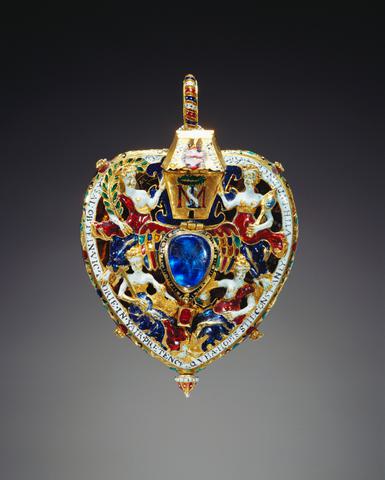
The Darnley Jewel, one of the finest jewels in the Royal Collection.
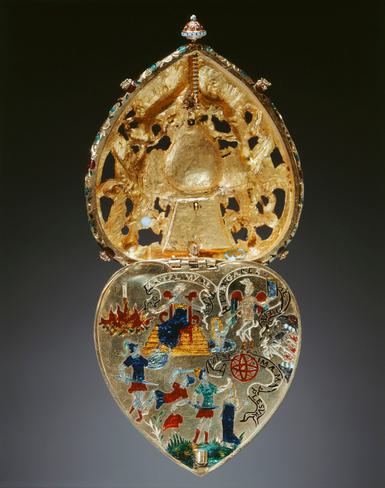
Exquisite enamel work on the reverse of the Darnley Jewel.
Further reading
Find out more about the Fettercairn Jewel in 'Decoding the Jewels: Renaissance Jewellery in Scotland', a free, online book edited by Dr Anna Groundwater.
The Fettercairn Jewel is on display in the Kingdom of the Scots gallery at the National Museum of Scotland, near to the Penicuik Jewels, which are associated with Mary, Queen of Scots.
Acquired with support from the Art Fund and Heritage Lottery Fund.

